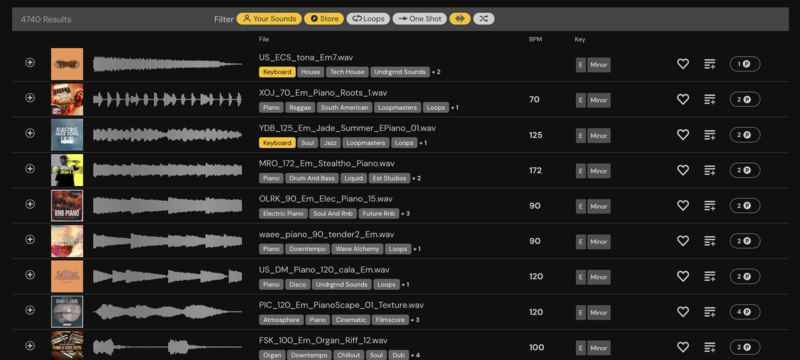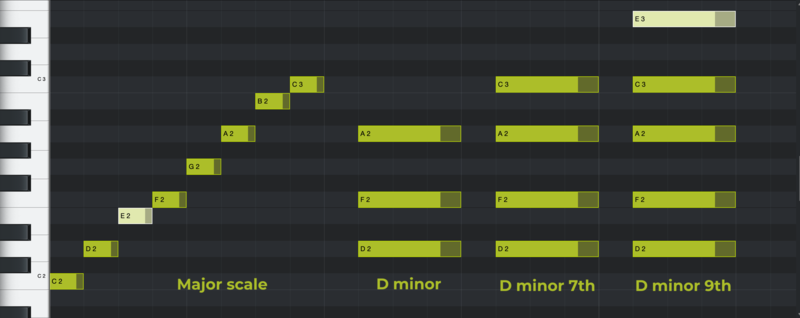Blog
Music Theory for Beatmaking
27 May '2025
Get started with the music theory that applies to making basslines, basic chords and melodies, in a more accessible and instantly useable way

Photo by Bryan Geraldo on Pexels
Music is an art, and for every use of feeling, there’s a corresponding rule that you can follow. Music theory is one way to make sense of music, and while it’s not the only way to move ahead, and isn’t usually necessary for a successful career in music, it can be a powerful tool that changes the way you look at music making.
In this article, we’ll run through some of the most basic music theory concepts that beatmakers and first-time music producers should find useful. What we’ll cover applies to most kinds of music, but it should be used as a guide rather than applied in a rigid way.
Getting in Key
Here’s the most essential starting point in music theory that’ll take you the furthest: assuming they’re the same tempo, if two things are in the same key, they can work together musically. Here’s how it works…
In Loopcloud or on sounds.loopcloud.com, we can narrow our search for samples by their key by choosing a note and a scale in the right-hand panel. As a random example, let’s choose E minor, and search using only the Bass tag. Now we get a huge selection of basslines in E minor, and we can choose one that works for us. Drag it into your DAW or start a new multitrack search for the next sample.

Next, search for E Minor samples using the Keyboard tag. If you select a song at the same tempo as the bassline, then given that these two are both in E minor, they should work together – or at least there’s a huge, huge chance they’ll work well together.

The same goes for vocals, melodics and even FX samples – if we select multiple samples in the same key and at the same BPM, we can expect it all to work together well. Finding a combination that works perfectly is down to your artistic ears, though.
Chords: The Basics
Starting from the start again, a chord is when multiple notes are played at the same time. You could have a two-note chord, a five-note chord or many others. One basic chord you may encounter is a triad.
What is a triad chord in music theory?
A triad chord is a three-note chord built on a pattern of notes from the scale. Say that we’re in the F major scale, meaning our notes as F - G - A - Bb - C - D - E - F. We build triads by taking a note, skipping the next note and landing on the next. Then skip another note and land on the next one to find our third note.
So for example, a G minor triad is G - Bb - D, three notes played at the same time, skipping over one note of the scale between each.

What’s the easiest way to construct a triad in a DAW?
The simplest way to think of and build triads doesn’t need the whole scale in your head. If you take a note and then move up by four semitones, then move up by three semitones, you’ll have a major triad. If you swap these and move up by three then four semitones, you’ll have a minor triad.

What are the types of triad made by a regular scale?
If a major triad can be ‘spelled’ as 1-4-7, and a minor triad as 1-3-7, with the gaps between their notes numbered from the image above, then there are actually two more triads that can be made.
The diminished triad would be represented 1-3-6, and is actually a triad you can build from the regular major and minor scales (E diminished in our F major scale example above). The other is the augmented triad, 1-4-8, which isn’t naturally made from the notes of a single major or minor scale.
Intervals and Ear Training
Any pair of notes can be described as an ‘interval’, using the gap between the notes. For example, when we jump from a G to the D above it, moving up seven semitones, this can be called a Perfect Fifth. This can be found again wherever we jump seven semitones: Bb to F, or perhaps D# to A#. What gives the interval its character is the size of the gap – in all these cases, seven semitones, which is a perfect fifth.
So what’s another interval? Four semitones is a major third, such as the gap between C and E. Ten semitones is a minor seventh, such as the gap between F and Eb.
The point of intervals is to learn the unique character that each has to offer. This is usually helpful in writing your own melodies, basslines and music in general, as you start to internalize the sounds that are the building blocks of every song.
Ear training for musical practise
You can get better at recognizing intervals quite easily if you do some regular practise. Sites like ToneDear and MusicTheory.net have some great quick exercises for familiarising yourself with the sounds of different intervals, and can train you to know what notes to reach for next.
Chord Extensions
Once you’ve got the hang of basic triads, these can become simply building blocks in making even more complex-sounding, expressive chords. The secret here, though, is that chord extensions are pretty simple things to get your head around.
If you can build a triad by jumping over one note in the scale to land on the next one, then you can build extensions on top of these. Simply keep the pattern going for the next note to make a four-note chord, turning a major triad into a major seventh, or a minor triad into a minor seventh. You can extend it further, making ninths as shown below.

Quick essential theory jargon busted
Chromatic Scale
A scale made up of every single one of the 12 notes
Diatonic
Most simply, this means that you’re using a seven-note standard scale just as major or minor, and the notes and/or chords you select confirm to that scale – they are ‘diatonic to it’.
Root
The starting note of a scale, and usually the starting note of any melodies made from that scale. In the D minor scale, the root note is D; in the A# major scale, the root note is A#.
Triad
Technically a three-note chord, but more often used to talk about simple three-note major and minor chords, and sometimes diminished and augmented chords.
Circle of Fifths
A chord progression created by moving between chords up and down a fifth (seven semitones up or five semitones down). An example would be five chords built on F – C – G – D – A in that order.
Modes
A musical scale (usually the major scale) is played not from its first note (the root) from its second, third, or fourth note, for example, reaching that same note at the top before coming down again. This results in a mode, which is technically a different scale.
Dominant Chord
Related to the interval of the fifth (seven semitones). In the D major scale, A major is the ‘dominant chord’. A is the fifth of D.
Dominant Seventh
Extended ‘seventh’ chords have a few flavours, depending on the scale. A dominant seventh is a major chord with a minor seventh interval attached, eg C-Eb-G-Bb.

